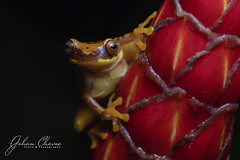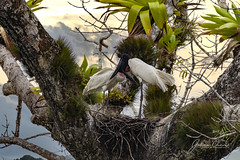Birding Costa Rica. March 2023
March was quite and interesting Month. While it is considered the hottest and driest time of the year, usual weather affected the country and brought with it a lot of rain for the first 15 days of March, I thought simply the rainy season had came it 1+ month earlier that usual!! May trees flowered! May beetles emerged from the ground to mate, land crabs did their migration, all in March!!
Interestingly this intense rain stopped and went back to its normal sunny conditions; this comes to show climate change is a reality whether politicians want to see it or not.
In terms of birding, I spent most of the month leading trips locally in Esquipulas, again, the best location to go birdwatching in Manuel Antonio.
It was quite productive, each morning we would get from 85 to 112 species in a morning with many of the typical near endemic species such as Riverside wren, White-crested Coquette, turquoise Cotinga, Black-hooded Antshrike and much more. Nonetheless, this month I got to guide a short trip to friends from Dallas, Jim and Gretchen Peterson.
These birders, Jim in particular, have been coming to CR for more than 20 years now and when they come, their target list just gets tougher and tougher, i.e more fun!!
This trip took us to one of my favorite locations; Caño Negro area and Arenal Observatory lodge in La Fortuna area. We met in a Hotel near the airport and our day started bright and early with a stop at Cinchona cafe where we got a lot of the typical birds that show up here.

Crimson-collared tanager, Palm, Scarlet-rumped, Silver-throated and blue-gray Tanagers never fail to show at this feeder. With Coppery-headed Emerald and barred Hawks as the highlights here, we then went down to La Virgen del Socorro —a must do stop when heading to fortuna or la selva biological station area.
This location offers some productive road-side birding, here we got about 28 species in a about 15-20 minutes, including Ornate Hawk-eagle, Sooty-faced Finch and Green Thorntail.
Our next adventure was at Caño Negro with the one and Only! “Chambita Romero” he is a local bird guide who covers caño Negro and Medio Queso wetlands. His birding skills are second to none and knows the area like the back of his hand. Our two boat rides delivered many good birds, as typical we got Pinnated and least Bitterns, Sungreebe, Blavk-collared Hawk, Northern Harrier, Nicaraguan Grackle and Nicaraguan Seed-Finch among many many others.
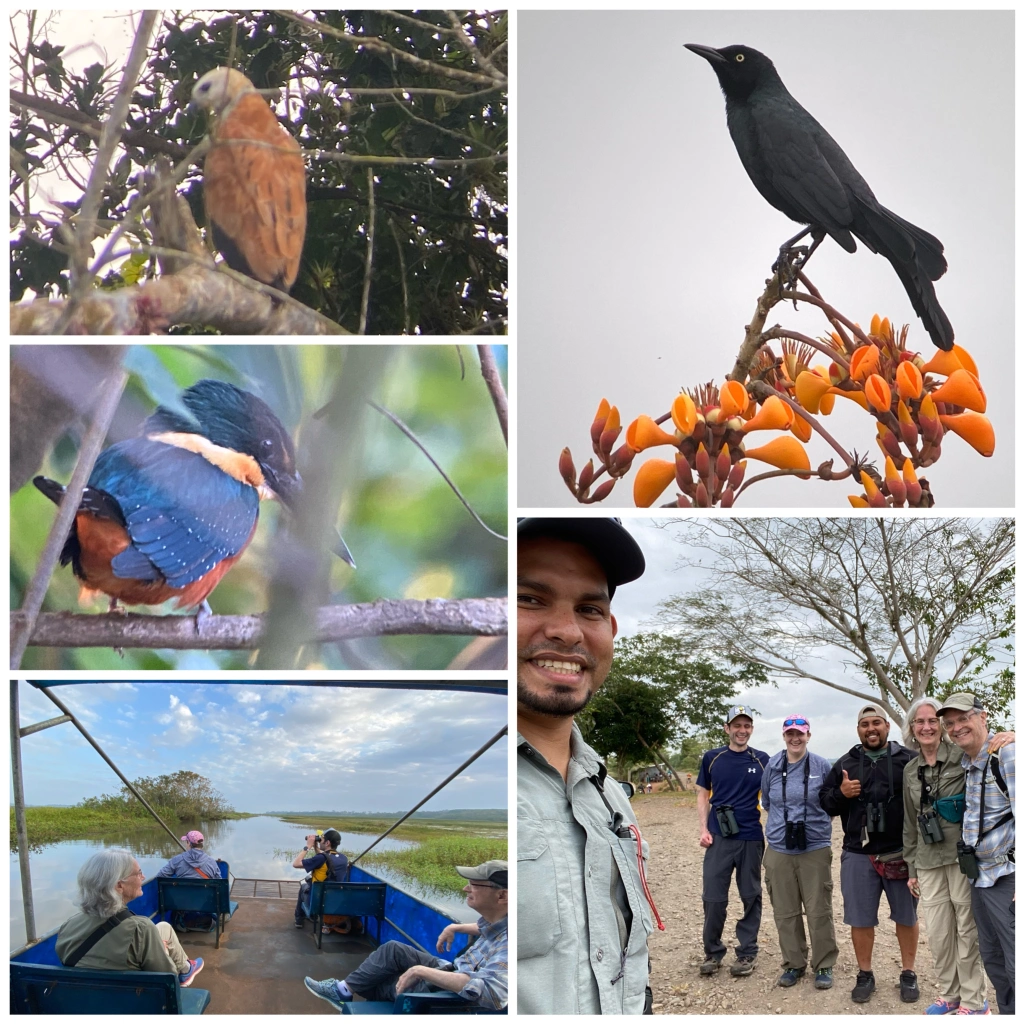
Our next stop was Arenal Observatory lodge, we were quite excited as we kept looking at reports of Rufous-vented Ground-Cukoo, unfortunately, no recent records near our arrival time. However here we got Nightingale Wren, a nemesis bird to Jim, Cape May Warbler (my favorite of the trip), Golden-bellied Flycatcher, Ocellated Antbird and Ornate as well as Black Hawk-eagles!!

In Sky adventures we had a good walk that produced a bird Jim wanted to see the most: Yellow-eared Toucanet, possibly thanks to the intel shared by a fellow bird guide Anthony Arce whom I thank for always sharing knowledge of the birds around his area. Tanwy-faced Gnatwren and uniform crake (at Bogarin Trail) were special birds during our time here.

On the way back, we did a quick stop at Canopy San Luis where the trails were not productive at all but the feeders delivered as usual some good birds.
A very nice trip full of great memories and thought birds for Gretchen and Jim. I am now looking forward to our next outing in October.
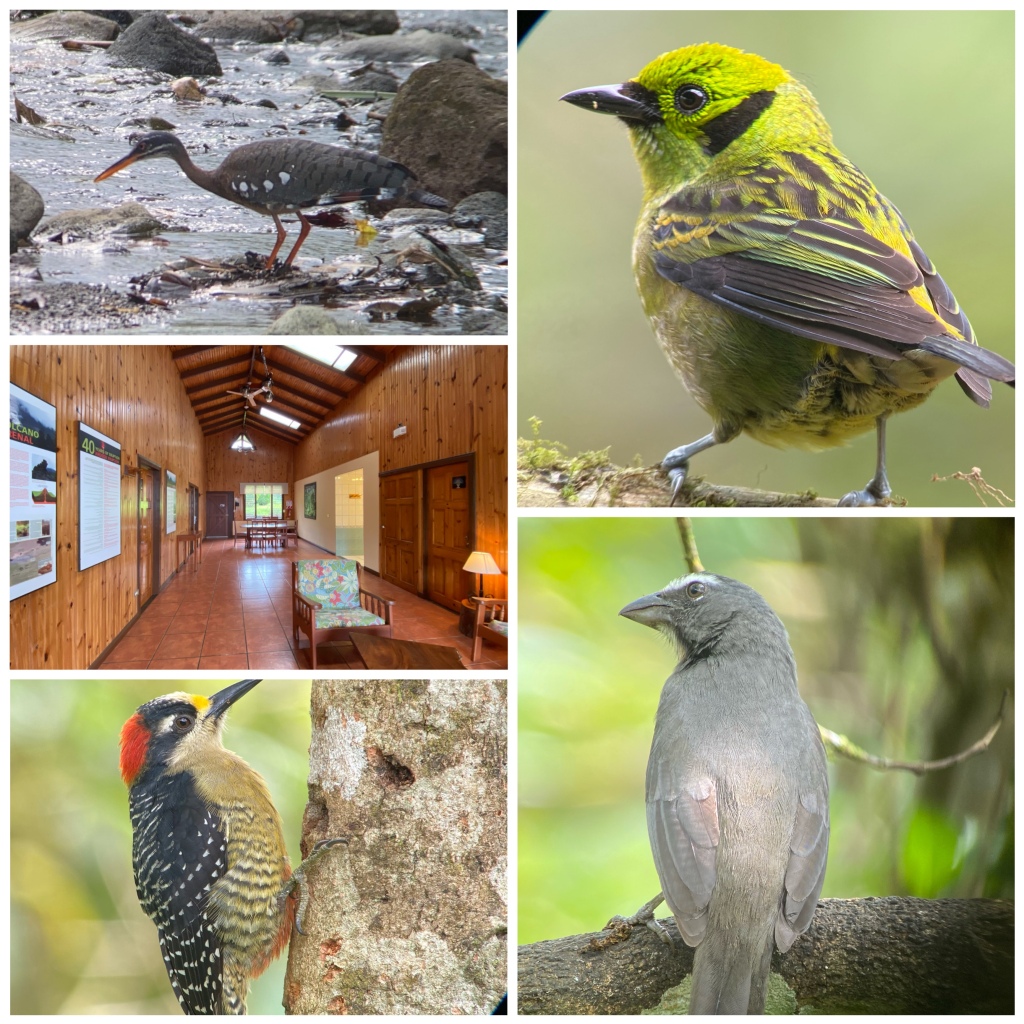
Birding in Costa Rica. February 2023
February, the shortest month of the year was well packed with birding outings! I spent 95% of the month leading birding walks both locally and in other areas of Costa Rica.
Locally speaking, all outings where led in Esquipulas, the best birding in Manuel Antonio area. The road that leads to the town delivered many of the regional endemics that birders often look for when birding Manuel Antonio area. However, to me some of the most memorable highlights were Fork-tailed Flycatcher and Scaled Pigeons, birds that are not seen here regularly and are instead expected a bit further south such as the General Valley and Coto 47 near the Panama border.

January and February were quite exciting for Costa Rican birders since Cedar Waxwings were seen at multiple locations across the country, a bird many of my clients know means a lot to me, well, finally after missing it twice in January finally got them twice near Jaco while guiding some birding tours in that area.

Friend/clients Mitch and Beth as well as my buddy Andres went to the caribbean coast, primarily La Selva Biological station which is a superb birding location, we did several stops to get there including Freddo Fresas and Cinchona cafe, places full of birds, many quite special such as Buff-fronted Quail-Dove, Sooty-faced Finch and much more! on this trip we managed to get Ornate-hawk eagle near Cinchona area and Barred Hawk, a real treat since Mitch’s favorite birds are raptors.

Our time in La Selva and Braulio Carillo was super, not only did we get quality birding, but also laughter and great companion, with many highlights to them such as Purple-throated Fruitcrows, Middle-american Screech-Owl, Spectacled Owl, Keel-billed Motmots, Dull-mantled Antbird and more and much more.

Later on the month I had the chance to guide another client/friend, David Northrup. A client who I have been guiding since 2013 and covered quite a bit of the country, the south Pacific, central Pacific, Caribbean lowlands and middle elevation, Northern Caribbean as well as the central highlands. This time, we covered the Guanacaste area along with Monteverde and also had a pelagic birding trip.
Our trip started in Hotel El Robledal, my favorite hotel to use for clients arriving in the country on late afternoon flights. Next morning bright and early we got some of the needed birds such as Spot-breasted Oriole, then we drove to Puntarenas to catch our ferry to our first Destination; Coyote Rooms in Cabuya, where we would meet our birding companion for the pelagic trip; Ricardo, Tyler and Wilfredo “Pollo”. Our stops produced Rufous-necked Wood-rail in the mangroves near Playa Potrero, Elegant Trogon and several other dry-forest species.
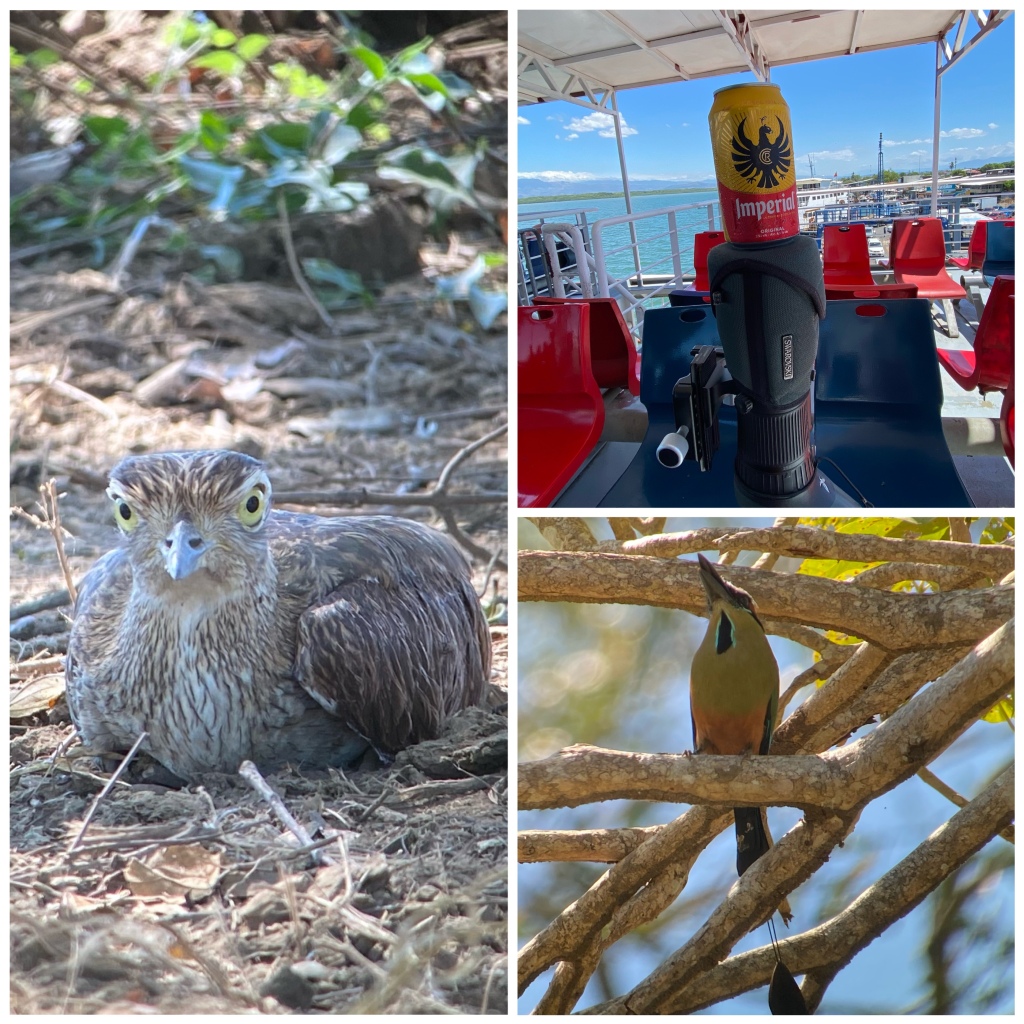


Our trip produced many birds and many many dolphins, we had a small variety but many were lifers to the people onboard, the best bird was spotted by Wilfredo, great views of Tahiti Petrel.
We stayed in Coyote Rooms, in Cabuya, run by Wilfredo’s wife Miss Jenny, +506-8922-4800

Wilfredo took us to some great locations where we got other specialty birds such as Lesser ground Cuckoo and Wandering Tattler, this part of the trip was very successful thanks to the collaboration of Wilfredo whom I am very thankful. He is after all, the lord of the seas!
The next leg of our trip took us to Liberia area where strong winds that were affecting the country messed with our birding time at Rincón de La Vieja volcano, a plan b needed to be pulled and so we spent time in El Viejo wetlands, a great place near Philadelphia where we got many birds, specially Jabiru, Limpkin, snail kite and so much more.
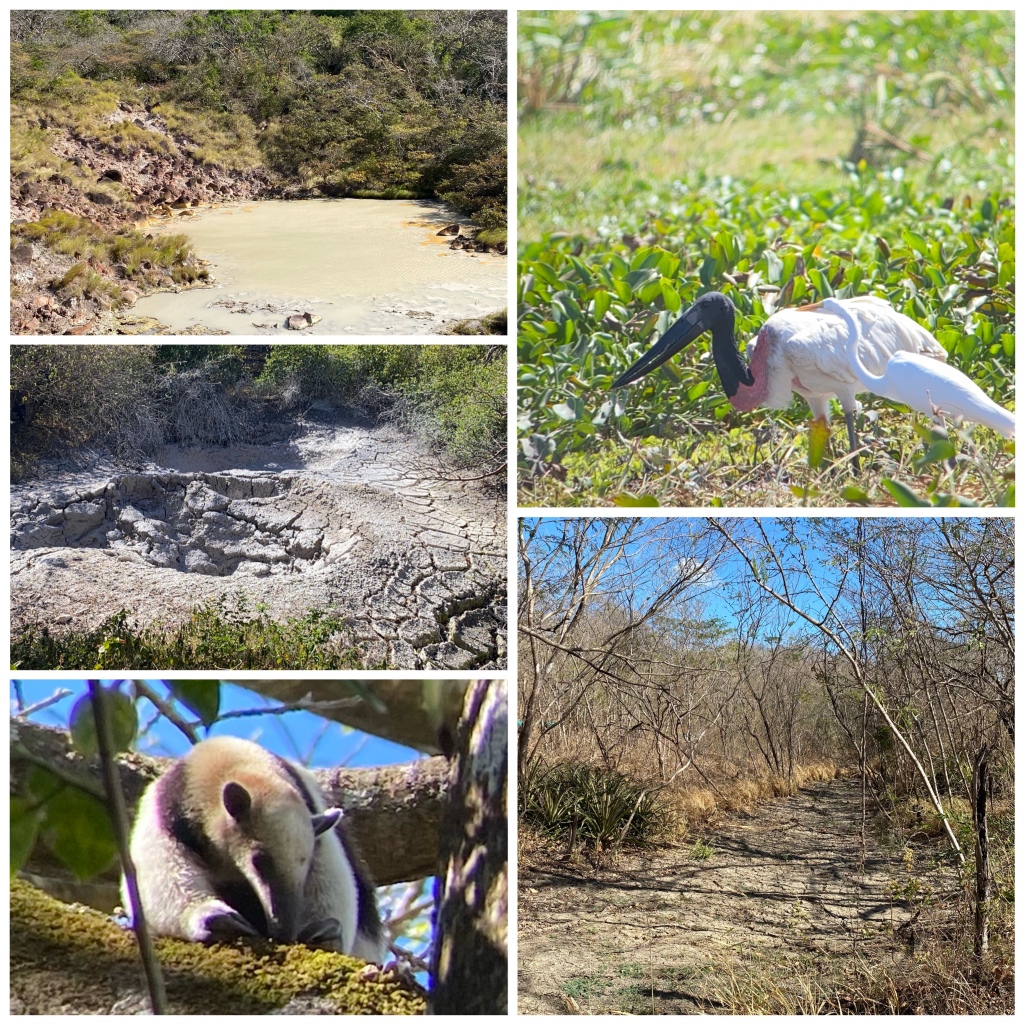
Our time in northern region continued to be affected by strong winds, and although we got many targets in Heliconias lodge, Celeste waterfall and Celeste Mountain lodge such as Tody Motmot, Tawny-faced Gnatwren the plan b saved the day and we spent time in Tapir Valley, this place is just amazing! Snowcap, black-crested Coquette, Ornate Hawk-eagle and Baird’s Tapir!!!


The next part of our trip took us to monteverde, with a stop at Chomes, and nearby localities to search for peeps and gulls. We sure did well with Sandwich and Gull-billed Terns. Mangrove rails and many common sandpipers/plovers.
Once a Monteverde the weather finally changed slightly in our favor. Curicancha reserve delivered and we got great looks at resplendent quetzal, gray-throated leaftosser, Golden-browed Chlorophonia, and many other birds to be expected here. Other nice birds during our time here included Barred Becard, Coppery-headed Emerald. Nonetheless we missed David’s most wanted target; Three Wattled Bellbird, we were just too early in the season and they had not yet arrived to their lekking areas. We enjoyed our theme song “You can’t always get what you want” by the Rolling Stones.

On our last day we left Santa Elena reserve as it was just such a crowded day and used again another plan b! A stop at Carara NP in our way back to SJO and as usual, Carara proved to be one of the best locations! Great Tinamou, Manakins, antbirds, motmots and trogons! Certainly a great way to end the trip!


Birding in Costa Rica January 2023.
2023 has been so far a good year. I had been leading a few birding trips away from Manuel Antonio that had kept me quite busy.
Locally speaking I led morning outings in Esquipulas, this is the best birding in Manuel Antonio. Not only is the typical road to Esquipulas excellent but also the new-ish place called Esquipulas rainforest Lodge was excellent, their feeders were full of birds and some which are targets to many birders and photographers such as Fiery-billed Aracari, Golden-naped Woodpecker and Spot-crowned Euphonia and much more were seen at the fruit feeders, while iconic species such as White-crested Coquette was not too regular at the Lantanas.
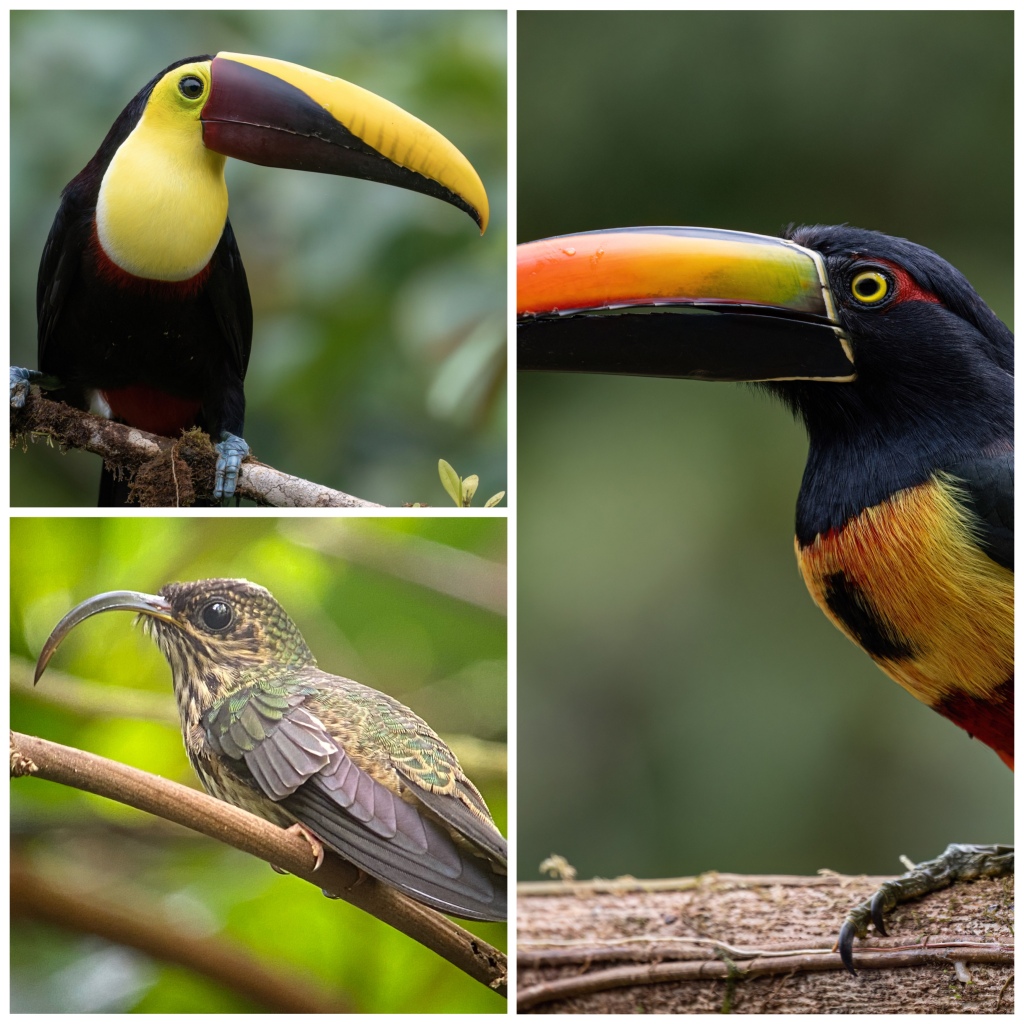
The short trail at Esquipulas Rainforest lodge produced several good birds for my clients during January, Red-capped, Orange-collared and Velvety (former Blue-crowned) Manakins as well as White-tipped Sicklebill was regularly seen on January but interestingly did not do to good with Turquoise cotinga during the month. Both Esquipulas RFL and the typical road where I bird was fantastic during the month of January (beginning of the dry season).
On early-mid January I had the chance to guide a client who I know, Richard Smith, and his friend Roger Murray, both form Northern Ireland around various location in Costa Rica, mainly on the Caribbean side of the country and Some of the highlands.
Our trip started on El Robledal hotel, a small hotel I like to use for my clients with extremely friendly staff and well located near the airport. we immediately drove up into Mirador Cinchona, a well know spot when heading into the Caribbean side of the country but first we stopped at Freddo Fresas for some targets.
Once at Cinchona café we were welcome by many birds, some iconic birds of this site such as Red-headed and Prong-billed Barbets, a pair of Crimson-collared Tanagers, and many more birds, here we got Green Thorntail and the CR only endemic Coopery-headed Emerald as well as Black-bellied Hummingbird.The road down to La Virgen Del Socorro did not disappoint, we got Rufous-browed Tyrannulet and White-fronted Tyrannulet, the first one being perhaps the best bird of the day!

Once in La Fortuna we spent 2 nights at Arenal Oasis, a small eco-lodge located near town in La Fortuna which offers good birding. We did places such as Skywalk, Bogarin Trail, the old road that led to the park via the Peninsula.
Birding in La Fortuna area was great and produced a big list of birds we only saw here during this part of the trip, some nice memories include Black-bellied Wren, Uniform and White-throated Crakes, Harris’ Hawk, White-and-white Owl, Dull-mantled Antbird, Golden-crowned Warbler, Blue-and-gold Tanager and so many more! We felt lucky with the weather as it only rained one morning during our time there.

The next part of our trip would take us to Caño Negro where we would meet with the one and only, Chambita Romero (Barnaby Romero), a great local boat man and bird guide in the area. Both boat tours we did with him in Caño Negro and then Medio QUeso were very productive and perhaps the favorite days for Richard and Roger. Sungrebes, various Kingfishers, Snail Kite, Black-collared Hawk, Pacific Screech owl, Common and Great Potoos and Agami heron were among the many favorites.
In terms of accomodations there is ot much to choose from here, so I just use a convenient hotel in Los Chiles called CyC, new with nice fully A/C rooms, good option so we could be ready early in the morning for the Medio Queso boat ride.
If you are birding in Caño Negro Chambita is the man to get, his contact is +506-8412-3269.

Up next on our trip was the amazing La Selva biological station, this has got to be one of my favorites sites in Costa Rica. This is one of the three research stations run by the Organization for tropical Studies (OTS) in Costa Rica. Although weather was not precisely in our favor as CR was experiencing a cold front which brought lots of intermittent rains, we managed to use our plan B (love plan b!) and spend one morning at Pierella´s garden, a fantastic place for photographer but for us we our alternative to shelter from the rain while still getting some birds, here we saw American Pygmy-kingfisher, Chestut-colored, Cinnamon and Golden-olive Woodpeckers! Rufous-tailed Jacamar and much more! Highlights in La Sleva include Ocellated and Spotted Antbirds as well as Purple-throated Fruitcrows and Black-capped Pygmy Tyrannt.
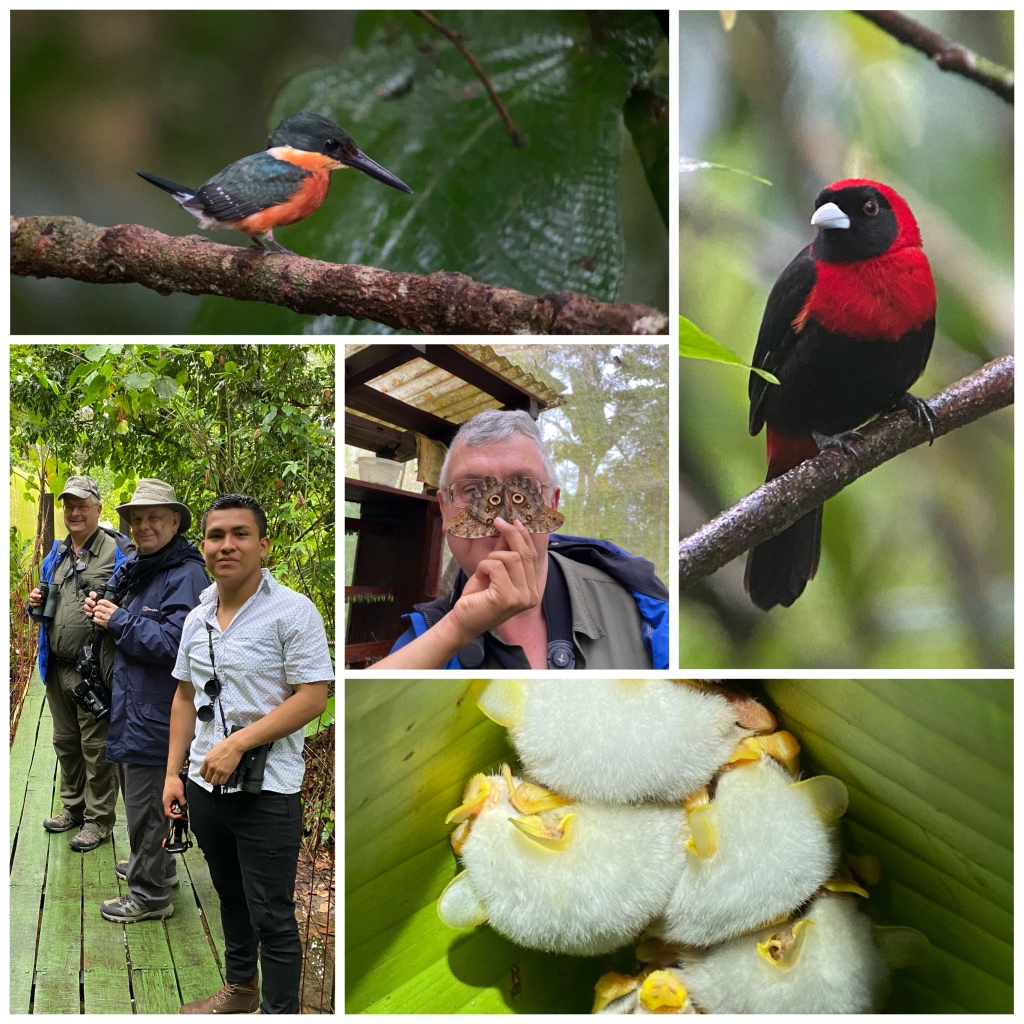

We could not leave here without spending time with the famous Cope (José Perez) who is a must while photography or birding in CR. His jungle walk delivers a good experience and this time we got Spectacled and Crested Owls!
After some rainy days on the Caribbean side it was time to see the sunshine, and San Gerardo de Dota was our destination. We spent time in Paraiso Quetzal seeing the Hummingbirds there at their feeders and got other nice birds such as Black and yellow Silky-Flycatcher and Long-tailed Sily-Flycatchers. Quetzals were seen soonest we arrived to San Gerardo and we spend some of our time there exploring the waterfall trails as well as the Hotel grounds (Sueños Del Bosque). Thanks
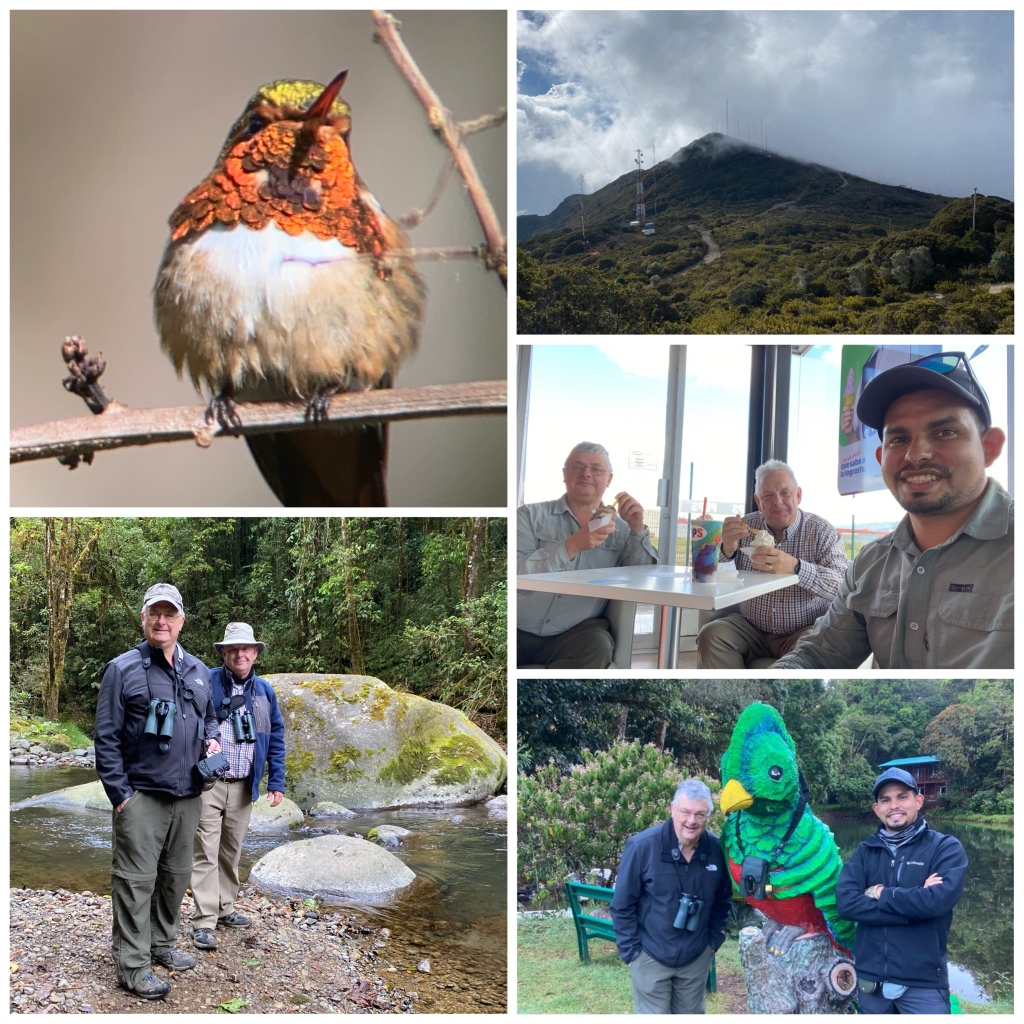
San Gerardo is one of the regions that produce a good number of regional species which we share with Panama, definitely worth to spend 2 nights here, good for birders and photographers alike.
Our last stop, would be Carara, and here we only spend 1 night so we could explore Carara and Tarcoles area. This hot to humid region is always good for many species found on the central-south Pacific region. We got Olive Sparrow, Yellow-naped Parrot, Streak-backed Oriole, Scrub Euphonia, Cinnamon Hummingbird, Mangrove Vireo and much more. We did miss the chance to see Cedar Waxwings that Patrick O’Donnell had told us about, but funny enough, Richard and Roger got them at El Robledal hotel while drinking a beer by the pool of the hotel before their flight out! Lucky them!

— For context: Cedar Waxwings are interruptive migrants, showing down here every once in a while, a highlight to us Costa Rican birders, 2023 had been a great year for this species and showed up in many locations in CR. I got my second sighting of this species while guiding near Carara area on late January. —
What a fabulous trip this was, we all got great experiences and enjoyed seeing many birds, but most importantly creating experiences that we will always remember
Back in Manuel Antonio, I spent the rest of the month leading some local birding outing that kept me away from the incredibly busy Manuel Antonio National park, these trips included one day trips to Esquipulas, Carara as well as 2 trips to San Gerardo de Dota to photograph highland birds and the iconic Resplendent Quetzal.


Overall January was packed with birds, return costumers and new ones, clients who became friends and share a passion whether it is birding or photographing wildlife. Do I have a favorite bird for January? That would probably be the Cedar Waxwings!
2022 A year of some normality.
As 2022 comes to its end with just 7 hours left on the clock I find myself writing this post full of joy but most important, gratitude.
2020 was a roller coaster and although 2021 was better it wasn’t exactly the best year neither. No complaints, there was health, and some laughter, but also tears and sacrifice.
2022 was a year of good, prosperity but in my opinion above all of that was a year of reflection, a year where we all learnt we are capable of great things during the strangest times our generation has lived. We fought, suffered but we adapted, evolved and thrived.
How was 2022 for me? amazing, blessed, full of health, tests and overcoming. Many of my clients who over the years had become friends came back to Costa Rica and got to take them on different birding trips ranging from multiple-day trips to one day trips, new friends were made and many, many birds were seen. Do I have any favorite birds, oh where do I even start!?
On January, during a trip I led for friends Mary and Dave Collins we had a blast and enjoyed not only amazing birds but also the companion, the jokes, the experiences we lived. During this trip we got the closest looks and perhaps the best pictures I have ever gotten of the rare Agami Heron, a bird I have seen several times before, but not this close.

During February although I had the chance to conduct two trips in CR the best bird came from the one I led for Natalie Tanner and her nieces Claire and Hannah. This trip was epic and although we got birds like Lanceolated Monklet, my favorite was no doubt the Rufous-vented Ground Cuckoo, a lifer bird to me and basically the last bird we saw as we were ending the trip.
On March I had a few favs, On early March I went on a scouting trip near the Panamanian border searching for some targets for my friends and clients Jim and Gretchen Peterson, this produced Northern Mouse-colored Tyrannulet, a lifer to me then.
Next bird would be Lattice-tailed Trogon a bird David Northrup and I got as lifer to us both during our CR trip in El Copal!
Oh how could I forget the Black-chested Jay! this was during Jim and Gretchen´s trip to San Vito area, a friend Henry gave us intel on where to find it and we did!

My next favorite bird was thanks to my friend Alex Montero who gave us the intel needed for it; Rusty Sparrow, near Puriscal.

Western Gull is next on my fav list, apparently one individual has been in Port Puntarenas since a year + now and after 6 trips searching for it I finally got it during a NON birding trip!
Back in October I was guiding some days in Monteverde area for friends Dennis and Kristin from NY and a report of Blue-winged Warbler was recent in Curi-cancha reserve, after an intense search we got it! Thanks to Esteban Mendez for the heads up and to Kristine and Dennis for bringing me yet another lifer (they got me a Violet-green Swallow some years ago!).
Finally the last favorite bird of 2022 was a Ringed-billed Gull. Yes a gull! These birds usually do not come this far south but every now and then some do and really make exiting news to us Costa Rica birders.

I am now looking forward to 2023, What would the new year bring to us all? Lets we make an awesome year!
Happy new year to you all!
Fondly,
Johan
Birding Costa Rica 2022. February. Natalie Tanner and family. Part 2 of 3.
La Selva Biological station is run by the Organization for tropical studies, a consortium of about 50 universities from different parts of the world, located in Puerto Viejo de Sarapiqui, this research station is considered one of the must visit birding sites of Costa Rica to anyone who comes to Costa Rica.
We spent 2 nights in La Selva, and during our time here we had an extremely productive time, the open areas near the dinner and facilities offered looks at many birds including Great-green Macaw, Scaled Pigeon (which was quite common for several months there), lesser swallow-tailed Swifts, and the classic Snowwy cotinga which we got on the tall trees near the entrance.
Time spent in the trails was equally good, we got many of the expected birds but highlights included Sunbittern (spotted by Natalie!), Kentucky Warbler, Dusky-faced Tanager, Smoky-brown Woodpecker and others. Our night time outings allowed looks of Mottled Owl and Middle American Screech-Owl. Way to go!

We did explore some spots outside of La Selva where we got birds such as Keel-billed Motmot at the local skate park, and the grasslands near the police station offered a lot of the typical seed-eaters, but the best birds we got there include Pied Puffbird, White-lined Tanager and Canebrake Wren.

Our next stope would be Los Chiles, so we could enjoy 2 boat rides with “Chambita”, however, these adventurous ladies decided to squeeze a stop in Mirador Cinchona, and what a great detour we took, here we got birds we never saw again on our trip such as the Green Thorntail, Coppery-headed Emerald, Black-bellied hummingbird, and Red-headed barbet among others.
We spent one night at a simple but convenient Hotel in Los Chiles, Hotel C y C, next to the hospital, the next morning we were ready to See Chambita at 6:15am and off we went on our first boat ride in Medio Queso.

Barnaby or ¨Chambita” as he is well known, is a terrific local guide who got us many of our targets we needed and a bit more, doing 2 boat rides with him in a day is a great idea since we got many of the aquatic species for the trip that we never got else where, Sungrebe, Limpkin, Pinnated Bittern, Jabiru, American Kestrel, Great Potoo, Olivaceous Piculet and just too many good birds! we all loved this trips.
It was time to head to our next destination; Arenal Observatory Lodge in La Fortuna.
Birding Costa Rica 2022. February. Natalie Tanner and family. Part 1.
What an epic trip this was! That’s how I would like to start this entry!
Natalie is a client and friend that I know from previous trips in the past for her and family, most recent at the end of 2021 and start of 2022! This trip was totally not planned for her, but once she learnt there was a cancellation for this time frame she did not hesitate to take the dates! what a brave choice!
Our trip started in the SJO airport, where I met her and her two nieces Claire and Hannah, late in the afternoon, so we essentially drove to San Gerardo, dealing with the heavy traffic of the capital city San Jose.
Next morning our day started at 5:45am! It was Quetzal time! we went to a Friend’s place to search for the resplendent Quetzal which we got immediately as we arrived. This was a very special way for these ladies to start our birding trip through Costa Rica.
In general, birding in San Gerardo de Dota is quite good, the most popular trail accessible to the public is the waterfall trail which we did for the morning, there we got good mixed flocks where we got many of the expected birds in this region, although Buffy Tuftedcheek was our most enjoyed highlight! Still, Streaked Xenops, Golden-browed Chlorophonia, Northern Emerald-toucanet, and many of the highland hummingbirds made it for a great first full-day in Costa Rica.


Our next morning took us to the one of the highest peeks of the Talamanca mountains, the Cerro Buena vista (AKA summit of death), offer good chances to find the Volcano Junco, which we quickly got, then we moved to our next stop, the road that leads to Providencia. Unfortunately this part was very unproductive, and despite the fact we heard the Wrenthrush and Silvery Fronted Tapaculo neither came out for views, so we opted for plan b; go see my friend Cope in Guapiles area as an improvised stop in route to La Selva Biological station.

The stops we did at Braulio Carrillo produced Snowcap, Black-crested Coquette, striped Woodhaunter and others, King vultures were perhaps the bird that got Claire most excited as she spotted that when we were driving a busy road down the hill from Braulio Carrillo.
Cope’s place was so productive, our visit here produced Spectacled and Crested Owls, Bronze-tailed Plumeleteer and American Pygmy Kingfisher and other common species. This was certainly an excellent impression of the caribbean slope birding that was awaiting for them!

Birding in Costa Rica 2022 – January — The “Kempf clan”. Part 2 or 2.
After a long drive we manage to get to our accommodation, a beautiful villa on the southern flank of the Arenal Volcano in the town of El Castillo. Upon our arrival we did a short birding session where we got some common, but still nice to see birds such as Barred Antshrike, Least Grebe, Keel-billed Toucan, and Hepatic Tanager.
Next morning we left at 4:00am to Caño Negro (this group is a trooper!!). After a 2hr40 min drive we made it to Caño Negro where we met our local guide, the famous Chambita (Barnaby), this boat ride is excellent and always gets us great birds, thanks to Chambita’s deep knowledge of the area and its birds.

His little more than 3hrs boat ride got us excellent birds, naturally many of the common/classic species to be expected on this type of habitat where Sungrebe, Jabiru, American Pygmy-Kingfisher, Black-collared Hawk were big highlights to us all. Unfortunately, despite how hard Chambita looked we missed on the Agami Heron.


Top right: Mr Jorge at Restaurant Luna Magica, my favorite place in Caño Negro.
Our next outing took us to the hanging bridges at Sky Walk in Fortuna, the trail system here is excellent and although it can get a bit busy at times, birding here still very productive and it is completely worth the visit. The views off the hanging bridges offer great chances to spot raptors such as Ornate Hawk-Eagle. After getting several mixed flock species led by White-shoulder Shrike-Tanager we came across an army Ant swarm, this was a great way to end our birding time here! Bicolored Antbirds, Spotted Antbirds, Zeledon’s Antbird, Ocellated Antbirds everywhere!
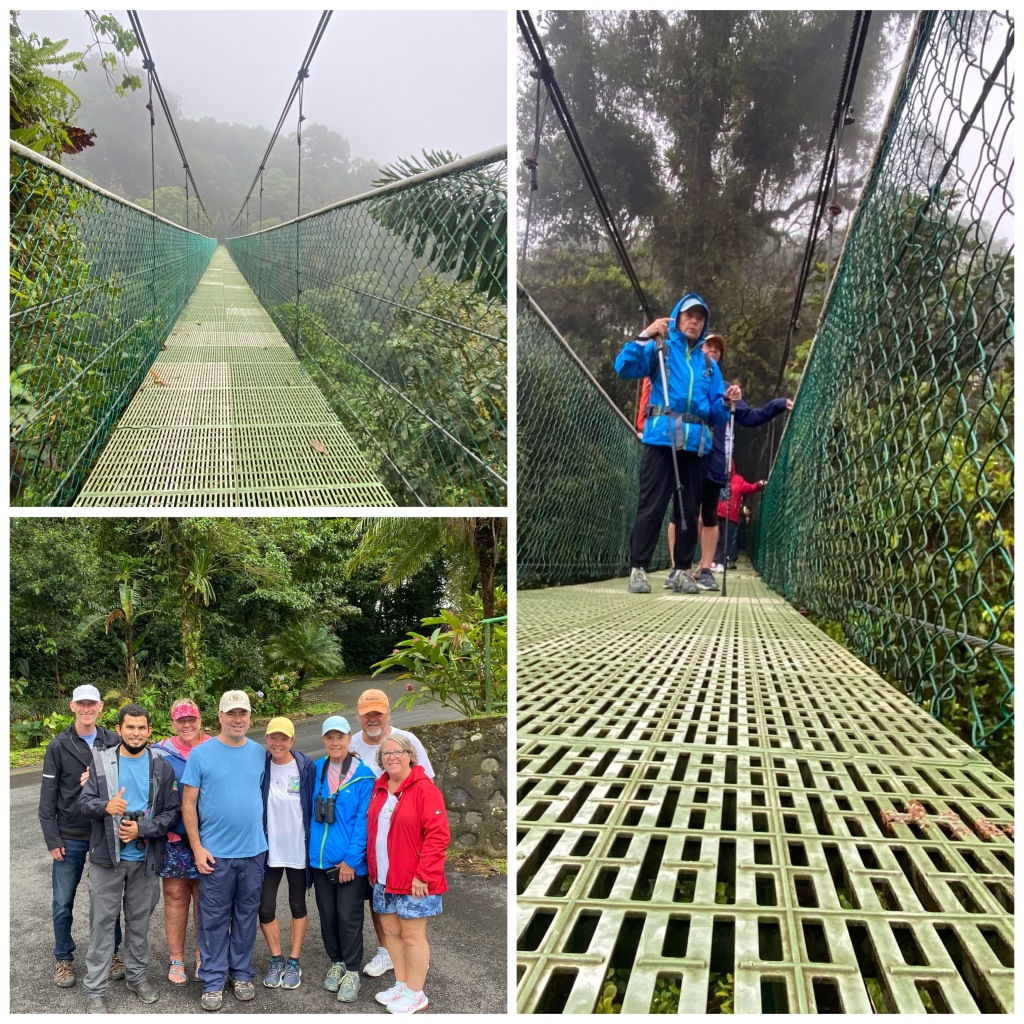
This is a fabulous group! I look forward to our next outing and lots of fun!
Birding in Costa Rica 2022 – January — The “Kempf clan”. Part 1.
Lori and Mark and clients and friends from Minnesota, whom I have guided for more than 6 times now and it is always a joy to see again and spend time exploring around every time they come with family and friends! a wonderful group with a great appreciation of the natural world and yes! birds!
Our first outing took us to the popular Manuel Antonio National park, where during a morning we got to watch a lot of the typical wildlife that is found here, including monkeys, sloths etc. A tour to Manuel Antonio national park never disappoints !
Our next outing took us to the famous Carara National park, a must visit for birders
Carara offers a good trail system that allows access to good habitat for many forest-interior species. Our first stop was near the villa Lapas road where we got 44 species in a gap of 35 minutes where Purple-crowned Fairy, Orange-fronted Parakeet, Scarlet Macaw and Olivaceous Piculet were highlights.
Carara is a fabulous location that offers most of the central/south pacific specialties along with some of the northern, drier habitat birds such as Black-headed Trogon, Turquoise-browed Motmot, Long-tailed Manakin and more.
Along the trails here our group got nice birds such as Charming Hummingbird, the very unusual Long-tailed Woodcreeper, Worm-eating Warbler, Pale-billed Woodpecker, and Red-capped Manakin as the highlights of this session.
Biridng Carara is not complete if you do not visit the mangroves near Tarcoles, which we did! and got Ferruginous Pygmy-owl, White-browed Gnatcatcher (Formerly known as Tropical GC) and Common Black Hawk as our highlights.
It was time to more to our next destination, Fortuna/Arenal Volcano area.
Birding in Costa Rica 2022 — January 2022 Collins. Part 3 of 3.
Monteverde is a region well known for its cloud-forest and it’s important conservation efforts. Located on the Tilaran mountain range with elevations of about 1500 meters.
Among the first settlers that came here were Quakers back in the decades of the 50’s. These people have no interest to participate on the war, so they left their farms in areas such Alabama and found a peaceful new home where they could set their new dairy farms and also live their conservationists ideology. Setting one of the first private reserves in Costa Rica; Monteverde Cloudforest reserve, with 4125 hectares approximately.
We spent two nights here at Cala lodge. Small, family run lodge with great rooms and excellent location somewhat near down town and accessible to birding areas.
Our first visit was Curi-cancha reserve, a private reserve that offers excellent birding opportunities, windy conditions made birding a bit challenging but we still manage to get several birds such as Gray-throated Leaftosser, Ruddy Foliage-gleaner, Mottled Owl, Northern Emerald-toucanet and Goden-browed Chlorophonia. Unfortunately it was too early in the year for Bellbirds!
We did spend time in the hummingbird feeders at the entrance of Monteverde reserve, where we got Coppery-headed Emerald and Magenta-throated Woodstar as or highlights! Great photographs were produced here.
The Monteverde cloud-forest reserve was a bit quiet in the begging until we got lucky with a mixed flock (the typical birding pattern here in the cloud-forest) followed by an ant swarm where Dave got fantastic pictures, including Silvery-throated Jay! Zeledons andbird and so much more!

Overall, Monteverde was a bit slow in terms of birds, however we got several new species, after some cold days it was time to move to our next destination; Manuel Antonio area, my hometown. We took the San Luis route so we could stop to seek for the Ornate Hawk eagle at its nest, which we got! as well as other birds along the many stops we took.

Once in the area, Dave and Mary spent some leisure time on their own for a couple of days, so they could enjoy the town and beach, no need for early start times! Our last outing included a visit to Esquipulas, a local patch where Dave and Mary had gone birding with me in the past, this time our focus was mostly the photography, and we sure had a great time getting some of the SE endemic species such as Fiery-billed Aracari, Golden-naped Woodpecker, Spot-crowned Euphonia and more!
Our trip came to its end, celebrated with a special dinner my friends treated us, what a nice way to end a trip where we all had a fantastic time, great birds! amazing food, hours of laughter, many lifers and photos, but above all great companion! I cannot wait to see you guys in Canada!

Birding in Costa Rica 2022 — Introduction
Birding in Costa Rica 2022 — January 2022 Collins. Part 1.
Birding in Costa Rica 2022 — January 2022 Collins. Part 2.
Arenal volcano is one of the most touristy regions of Costa Rica, and often not thought as a destination to visit for birders, but, interestingly Birding in La Fortuna is superb, and due to the amount of trails, hotels and reserves La Fortuna and Arenal volcano area offers many great birding possibilities.
Our hotel (Arenal observatory lodge) is amazing, the scenic beauty is just amazing, but, most importantly is the birding here, during our stay here we got several good birds both at the feeders/gardens as well as the trails here.
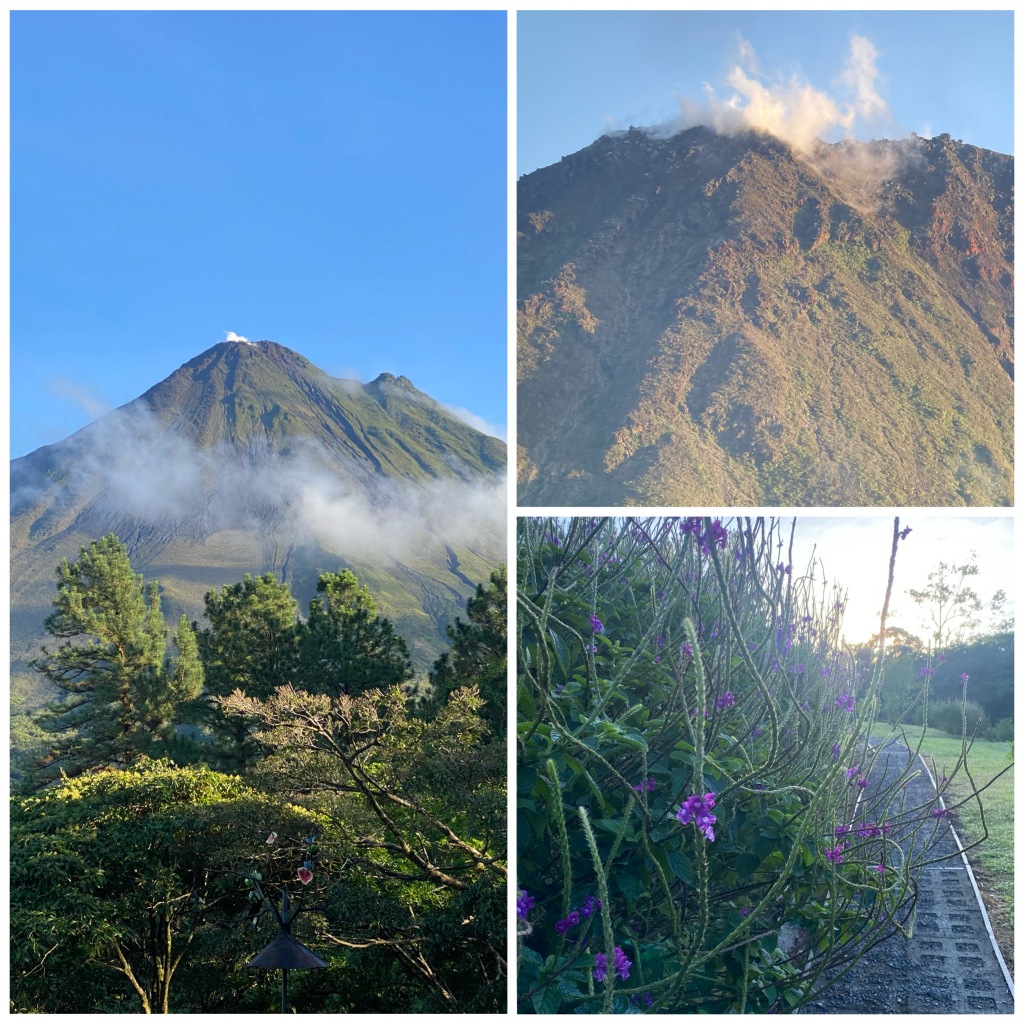
Every morning and afternoon we spent time checking the feeders and gardens where we got Emerald Tanager, Dull-mantled Antbird, Tawny-faced Gnatwren, Kentucky Warbler, Semi-plumbeous Hawk and Band-backed wrens as our highlights.
We took a 1-day visit to Medio Queso Wetlands and Caño Negro with the famous “Chambita” (Barnaby Romero), our early depart was paid with a sighting of an ocelot, a mid to small sized wild cat! after 2hr15min drive our adventure began, our first boat ride with Chambita was at Medio Queso, a large weltand just east of the town of Los Chiles, here we got many of the typical aquatic species you would expect, but our highlights included Yellow-breasted Crake, Pinnated Bittern, American pygmy-kingfisher, Nicaraguan Grackle and ending with a Great Potoo in the town of Los Chiles and a Jabiru nest! This boat ride is perfect not only for birders, but should be a must do to any bird-photographer visiting Costa Rica!


After a series of stops along the way, and lunch we took our second boat ride in Caño Negro with Chambita, this was just as amazing as the morning ride, but in addition to all the great new birds for our trip (inlcuding Sungreebe), our best moment was when Chambita got us close to what many would consider the most beautiful heron in the Americas! The Agami Heron!
What a way to end this amazing day! Well worth the driven time!


In La fortuna, one of my favorite birding spots in the trails at Sky Adventures, their hanging bridges allow for great views of the forest Canopy and awesome chances for raptors, and mixed flocks, favorite birds here seen include Ocellated Antbird, Song Wren and Barred Hawk.
We could not leave La Fortuna without visiting the popular Boagarin trail, small patch overrun with tourist, but still is the best place in CR for crakes, where we got both Uniform and White-thorated Crakes.
It was time to move to our next spot, Monteverde Cloudforest.
Birding in Costa Rica 2022 — Introduction
Birding in Costa Rica 2022 — January 2022 Collins. Part 1.











